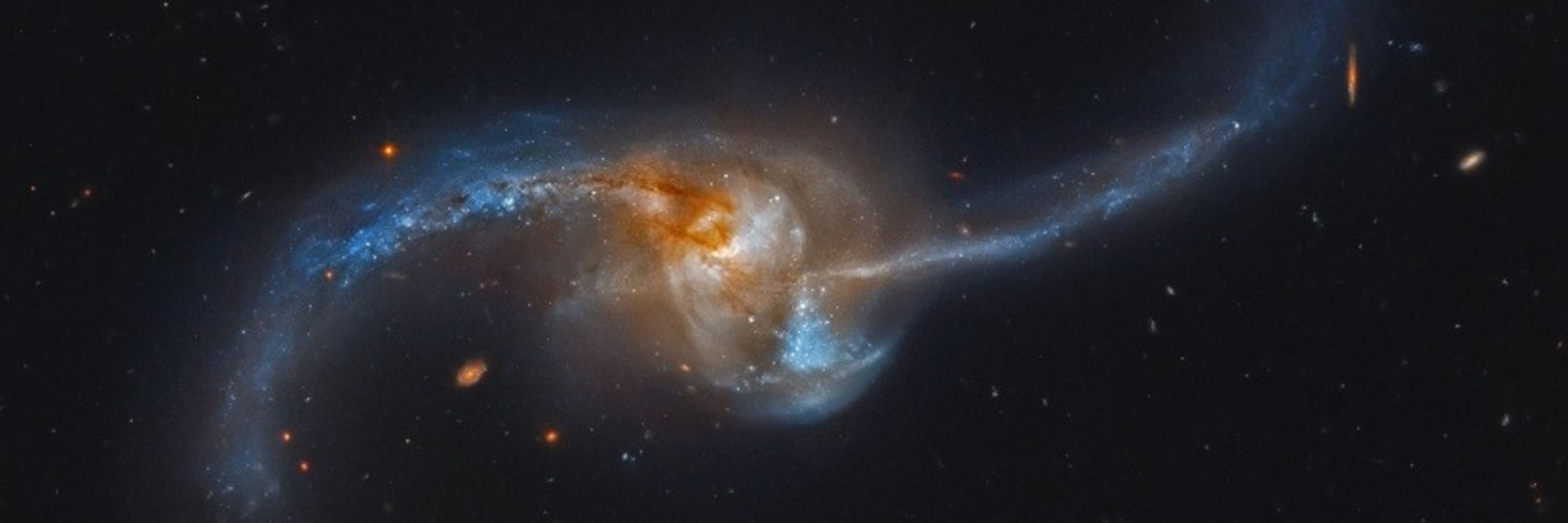
I've participated with a chapter on "X-ray and radio surface brightness edges in the ICM", you can find it in the Galaxies GO Science section (page 69)

I've participated with a chapter on "X-ray and radio surface brightness edges in the ICM", you can find it in the Galaxies GO Science section (page 69)
Combining the gas kinematic from XRISM and WL from Subauru, a new merger scenario is proposed. The "3rd dimension" has been unlocked thanks to XRISM 😀
arxiv.org/abs/2510.16291
arxiv.org/abs/2510.16553



Combining the gas kinematic from XRISM and WL from Subauru, a new merger scenario is proposed. The "3rd dimension" has been unlocked thanks to XRISM 😀
arxiv.org/abs/2510.16291
arxiv.org/abs/2510.16553





arxiv.org/abs/2509.14348

arxiv.org/abs/2509.14348


The giant fossil lobe is studied in detail. The new data show steep spectrum filamentary structures embedded in the lobe. The lobe extends up to 820 kpc from the cluster center
arxiv.org/abs/2508.20190

The giant fossil lobe is studied in detail. The new data show steep spectrum filamentary structures embedded in the lobe. The lobe extends up to 820 kpc from the cluster center
arxiv.org/abs/2508.20190
A low velocity dispersion is measured in the inner and outer regions (115 km/s at <25kpc, 186 km/s at 25-50 kpc). The same goes for the bulk velocity (8 km/s vs 104 km/s): is the sloshing at its minimum?
arxiv.org/abs/2507.00126

A low velocity dispersion is measured in the inner and outer regions (115 km/s at <25kpc, 186 km/s at 25-50 kpc). The same goes for the bulk velocity (8 km/s vs 104 km/s): is the sloshing at its minimum?
arxiv.org/abs/2507.00126
A rotation measure and polarization study is performed with MeerKAT. The magnetic field profile of the ICM is drawn, indicating a central field strength of 9.5 muG at the cluster center.
arxiv.org/abs/2507.00114

A rotation measure and polarization study is performed with MeerKAT. The magnetic field profile of the ICM is drawn, indicating a central field strength of 9.5 muG at the cluster center.
arxiv.org/abs/2507.00114
A sample of 21 massive clusters is studied. Diffuse radio emission is detected in all systems (new halos and relics!)
arxiv.org/abs/2507.00133

A sample of 21 massive clusters is studied. Diffuse radio emission is detected in all systems (new halos and relics!)
arxiv.org/abs/2507.00133
A @NASANuSTAR observation of the cluster is presented. The spectrum is better described by a 2T thermal model. An updated limit of B > 0.2 muG is provided from the lack of IC emission
arxiv.org/abs/2505.20453


A @NASANuSTAR observation of the cluster is presented. The spectrum is better described by a 2T thermal model. An updated limit of B > 0.2 muG is provided from the lack of IC emission
arxiv.org/abs/2505.20453
A2255 is known to be a "mess" (arxiv.org/abs/2006.04808). The new @LOFAR-VLBI images add further complexity in the system, this time revealing small-scale structures in its radio galaxies
arxiv.org/abs/2505.13595


A2255 is known to be a "mess" (arxiv.org/abs/2006.04808). The new @LOFAR-VLBI images add further complexity in the system, this time revealing small-scale structures in its radio galaxies
arxiv.org/abs/2505.13595
3/4


3/4
2/4


2/4
New radio halos with LLS>2 Mpc are reported, even at high-frequency. We measured the surface brightness and spectral properties of the emission, obtaining important results (more below)
arxiv.org/abs/2505.05415
1/4


New radio halos with LLS>2 Mpc are reported, even at high-frequency. We measured the surface brightness and spectral properties of the emission, obtaining important results (more below)
arxiv.org/abs/2505.05415
1/4
This is the first time that the gas velocity dispersion is measured in a merging cluster with a microcalorimeter! Interesting results: sigma_v is low while v_bulk is quite high...
arxiv.org/abs/2504.20928

This is the first time that the gas velocity dispersion is measured in a merging cluster with a microcalorimeter! Interesting results: sigma_v is low while v_bulk is quite high...
arxiv.org/abs/2504.20928
7/8

7/8
6/8


6/8
5/8


5/8
4/8

4/8
3/8

3/8
2/8

2/8
1/8
arxiv.org/abs/2504.16158


1/8
arxiv.org/abs/2504.16158
JWST imaging is used to reconstruct the mass distribution in the system which appears more complex than previously thought. A possible bridge of ICL is detected between the two main colliding systems.
arxiv.org/abs/2503.21870

JWST imaging is used to reconstruct the mass distribution in the system which appears more complex than previously thought. A possible bridge of ICL is detected between the two main colliding systems.
arxiv.org/abs/2503.21870

